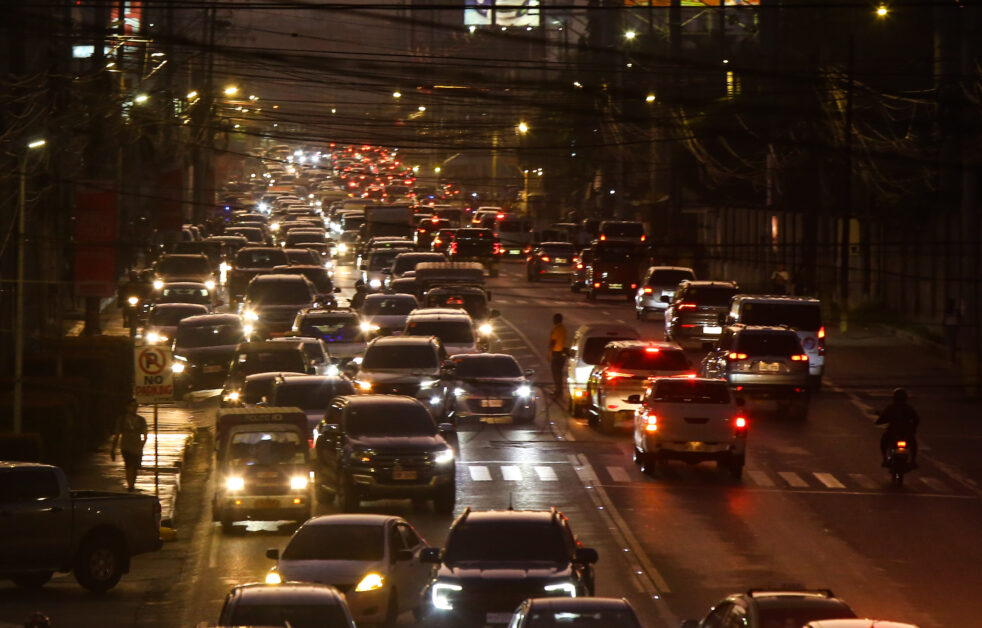Vehicle coding scheme pushed, criticized
DAVAO CITY (MindaNews / 2 September) — A proposed traffic scheme meant to ease vehicular traffic and decongest roads may end up worsening air pollution in the city, an environmentalist said.

In an interview with MindaNews, Ecoteneo interim director Mark Samante said the vehicle coding scheme being pushed by a city councilor might ironically even encourage people to buy more cars.
Councilor Jose Marie Bernardo R. Baluran, during the City Council’s regular session on August 26, proposed what he called a Unified Vehicular Volume Reduction Program (UVVRP) which seeks to implement a coding scheme similar to what is being done in Metro Manila.
Baluran is the chairperson of the City Council’s committee on transportation and communications.
But Ecoteneo’s Samante said the measure may hurt the city in ways that impact the health of residents.
“For [legislators], you’re only able to limit the number of vehicles. But if people have the capacity to buy, people will buy and this will add the number of vehicles according to the number coding days,” Samante said.
“Even if you limit vehicles to go out for a supposed day, it will just be a limited volume of vehicles that will not run, but ultimately, the pollution will increase,” Samante said.
A January 2025 study by Asian Transport Observatory, an organization funded by Asian Development Bank, reveals that vehicle emissions per Davao City resident in 2017 equaled to 292 kilograms per year. The same study lists public utility jeeps as responsible for an estimated 232,000 tons of carbon dioxide annually.
A 2023 Davao City Airshed Status Report from the Environment Management Bureau – Region XI also reveals that carbon monoxide is the city’s most emitted pollutant, with 119,343.21 tons released per year.
It is followed by volatile organic compounds at 56,216.20 tons, sulfur oxides at 28,318.65 tons, particulate matter at 26,098.50 tons, and nitrogen oxides at 13,074.69 tons annually.
Samante said the anticipated rise of the number of vehicles following the proposed coding scheme would further worsen the amount of air pollution in the city.
He said the most effective way to reduce vehicular gas emissions is to invest in a highly efficient public transport system.
He argued that an efficient system would not only lessen emissions but also make commuting more affordable than car ownership, particularly as fuel prices continue to rise.
A single bus carrying 49 passengers can replace dozens of cars, drastically cutting the number of vehicles and the gases they release.
Samante said the plan of the city government of Davao to deploy 10 modern, 12-meter Yutong low-floor buses by this month or by October 2025 is a good development, potentially helping reduce waiting time for commuters during peak hours.
The city government earlier announced that the 10 interim buses will be a good guide to test the sustainability of the bus system, especially that the ₱73.4-billion Davao Bus Project will be expected to roll out by 2027 as announced by the Department of Transportation.
The bus project is aligned with the city’s aim to decrease annual public transport greenhouse gas emissions by 60 percent.
Samante further called on the city’s leaders to allocate more funds toward studying traffic patterns and designing sustainable public transport systems that strike at the root of the problem.
But beyond government action, he called on citizens to take responsibility by limiting the number of household vehicles, maximizing their use, and adopting carpooling to curb emissions. (Ian Carl Espinosa / MindaNews)



No comments:
Post a Comment